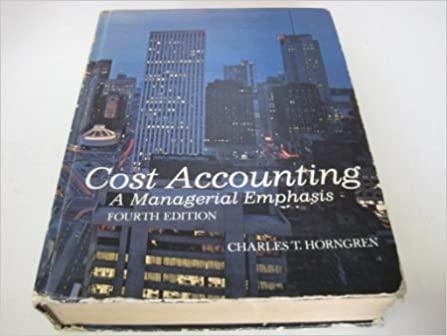Assume that ending work in process is one batch, two-thirds completed. Process Costing, Budgeting and Control (Prepared
Question:
Assume that ending work in process is one batch, two-thirds completed.
Process Costing, Budgeting and Control (Prepared by the author and adapted for use in a CPA examination) The Dopern Company uses departmental budgets and performance reports to help plan and control its process-costing operations. Department A has the following budget for January’s contemplated production of 1,000 whole units of equivalent performance, which represents a normal month’s volume.
VARIABLE AND CONTROLLABLE COSTS Direct materials $20,000 Direct labor 10,000 Indirect labor 2,000 Power 200 Supplies 800 $33,000 FIXED AND UNCONTROLLABLE COSTS Rent $ 400 Supervision 1,000 Depreciation 500 Other 100 $ 2,000 Total budgeted costs $35,000 Direct materials are introduced at the start of the process. All conversion costs are assumed to be incurred uniformly throughout the process. Production fluctuates from month to month, so that the fixed overhead is applied on a predetermined basis at a rate of $2 per equivalent unit.
There were no beginning inventories. Eleven hundred units were started during the month; 900 were completed, and the 200 still in process at the end of the month were estimated to be three-fourths completed. There is no material shrinkage or spoilage, and no waste of materials.
The following performance report was prepared:
BUDGET ACTUAL VARIANCE Direct materials $20,000 $22,550 $2,550 U Direct labor 10,000 10,500 500 U Indirect labor 2,000 2,100 100 U Power 200 210 10 U Supplies 800 840 40 U $33,000 $36,200 —- $3,200 U = Unfavorable A total of $2,000 of fixed conversion costs were incurred during January.
Cost of goods completed during January.
. Cost of ending work in process.
. Amount of under- or overapplied overhead at January 31.
. Comment on the performance report in 150 words or less. What specific conclusions can you draw from the performance report? l-01
Step by Step Answer:





